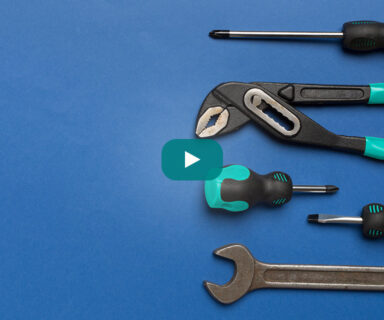 Do you have a piece of content that continues to engage people well beyond its anticipated “sell by” date? What do you do with it? Rather than simply sharing the same thing until it’s fizzled out, there’s an opportunity to do – and get – much more.
Do you have a piece of content that continues to engage people well beyond its anticipated “sell by” date? What do you do with it? Rather than simply sharing the same thing until it’s fizzled out, there’s an opportunity to do – and get – much more.
When I see that one of our marketing assets is engaging people successfully, campaign after campaign in outbound channels, or month after month in inbound, it’s a clear signal that a portion of our target audience cares deeply about the topic. And seeing as any single piece can only cover a small part of a big idea, I know there’s a great chance that I can explore it in additional ways and keep the engagement flowing.
As content creators, we all repurpose content from time to time for a variety of reasons – to fill gaps in the schedule, because someone asked for a rush job, there’s a lot of tactical needs. But it’s very different when we’ve created something that’s performing far beyond normal expectations. When that happens, it’s like we’ve discovered a particularly rich seam in a gold mine. And that presents an opportunity for strategic repurposing that you should never let pass by. Here are a few questions I aim to answer when I’ve struck pay dirt with content, so I can make sure I get all I can out of it.
#1 – What repurposing approach should you take?
Remember, we’re talking specifically about content that has garnered high engagement over a period of time. Be wary of pieces that are one-hit wonders – content that performed well initially but saw a quick drop-off in engagement – as these might reflect a short-lived event or time-sensitive trend that no longer resonates with your audience.
In thinking about leveraging high-performing content from a particular format, it’s helpful to consider what repurposing approach will best support both your audiences’ needs and your priorities. There are many approaches you can take to repurposing – I’ve highlighted a few I return to often:
- Direct translation. Take the content in its current format and translate it into a different format. In this approach, you may include some new information, but the topic, story arc and intended audience remain the same.
- Expansion. Pull one idea from the “parent” asset and build or expand upon it to share additional thinking.
- New perspective. Transform the content topic to apply it to a new persona type and use case.
#2 – How should the new content be different from its “parent”? What should be retained?
While one could view any derivative execution as nothing more than a copycat, to maximize impact it needs to be more than a gussied-up rehash. Your fans won’t appreciate being served leftovers, and new audiences are logically looking for something different from what you’ve served up already. So, while there is some reuse going on here, this new asset should be distinctly different from its “parent” piece, either in the content itself, in its format, or both.
Once you’ve determined what repurposing approach you’re taking, review the content to determine what elements, ideas, or imagery you will carry over to the new piece. Again, the new asset should be able to stand on its own as a valuable piece. The whole context of the parent shouldn’t be necessary. And ideally, while audiences should be able to read the new piece by itself to gain an understanding of the big idea, they should also be able to read both pieces together and come away feeling even better informed for having consumed both (pro-tip: the two should link back to one another).
#3 – Should the format change? If so, how?
When we think about repurposing, our minds often jump to new formats, but that doesn’t always have to be the case. For example, if you’ve created a successful webinar that attracts interest as an on-demand asset, you might have discovered an opportunity to develop a webinar series around the topic. Whatever formats you decide on for your new versions, they should target the consumption preferences of your audiences based on your historical data if possible. That said, because we do know that people like to consume content in different ways, a new format can powerfully increase your chances of engaging new people.
Before selecting your new repurposing format, consider factors like the type of information being shared, how it will be deployed and how it will be viewed. Here are a few content formats I use and the considerations I take into account when building new executions from an existing high-performing piece.
- E-books. As a long-form piece of content, e-books can be a strong approach for repurposing other long format work. Since these take a lot of effort, consider your audiences’ known preferences before committing.
- Webinars. As a high-engagement format, webinars can be effective at connecting strongly to targeted personas. But they do require additional resources to pull off (from registration to hosting). They can be become substantially easier if you already have a strong asset on the topic in another form, and easier still if you can bring on an additional expert as a guest on your show.
- Blogs. As a shorter format, blogs are useful when they focus on a discrete idea, perhaps taken from a longer piece. Or they can serve as an overview of a topic you’ve dived deeply into elsewhere.
- Infographics. If your content includes primary or secondary research or rich data, an infographic can be a great way to introduce the subject or provide useful tips and quick takeaways. Infographics can also focus on elements of a longer story that could benefit from more visual storytelling.
Repurposing content has always been practiced by content teams as a way to feed the insatiable content engine. Yet the practice can be misused. My high-performing content-based approach provides the signals I need to be confident that my audience truly does want to hear more on a topic. In fact, I use it both to decide what can be repurposed and to plan what topics I recommend that we lean into going forward.




